
Rivian unveiled the R2 – and the surprise R3 – yesterday, and after getting back and having some time to digest the event, I’m here to talk about a lot of smaller details that I learned which didn’t get mentioned on the livestream.
The rest of the Electrek crew caught the livestream and kept you up to date in our live watch party and articles you can find on our R2 launch news hub.
But I headed down the coast to the venue itself, in beautiful Laguna Beach, California, to be on hand for the reveal.
The event was held at the Rivian South Coast Theater, a historic theater that had fallen into disrepair, which Rivian renovated and turned into a retail and event space.
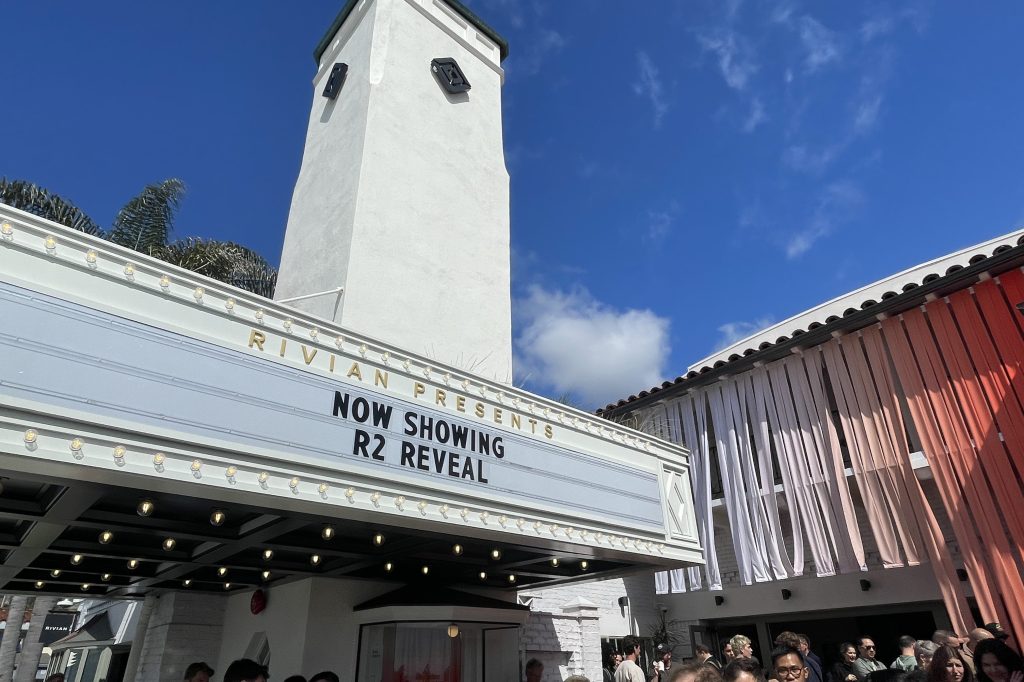
And then… Rivian changed it up again to turn it into a space for the car unveiling, which had a whole new stage and screen set up, bleachers for media to stand/sit in, turntable for the cars, and so on.
And just from the very beginning of the event, Rivian started getting the details right. The stage looked great, good lighting, and the presentation actually started on time (that’s not something we’re used to in the EV world…).
But what really matters here are the cars, and Rivian didn’t miss the details there either.
One thing I was worried about with the shift from R1 to R2 is that the necessity of getting costs down would mean a lot of the “neat little things” about the car would get cut. The R1T has a lot of cool features like the bluetooth speaker, flashlight, gear tunnel, and so on. I thought maybe we would get one or two “headline neat features,” and the rest would give way to being just a normal well-made SUV.
So imagine my gradually rising surprise levels when, after the main presentation, they continued to reveal more and more neat things that I wasn’t expecting, and that weren’t mentioned during the livestream.
For example, we all saw the slide-down rear glass, which is cool enough on its own – it will reduce buffeting when the windows are down, and allows for loading very long objects into the car, especially when combined with the fold-down rear and front seats (chief designer Jeff Hammoud mentioned hauling 16-foot-long baseboards).
But beyond the rear glass, there’s a small “flip-up table” which you can reach into the window and pull up, giving you a small interior shelf to put things on – kind of like a miniature tailgate or the edge of a truck bed. Here’s a photo of what it looks like deployed – though the tailgate was up, so you’ll have to turn your head sideways to get a sense of what it will look like when its down.

Okay, so we can have a tiny tailgate party. That’s kinda cool, and surely people will find some sort of interesting use cases for that.
But a much cooler feature, with to me much more immediately apparent uses, is the slide-out cargo floor.
Like many EVs, there’s a large well underneath the rear cargo floor for more storage. Most EVs have a removable cover that functions as a flat cargo floor, but the R2 takes that to another level. The cargo floor slides about a foot out of the vehicle, and seems like it can hold a reasonable amount of weight:
This seems like a super useful feature to me. If the shelf is like a mini-tailgate, this is closer to a full-fledged tailgate. You can sit on it (though I’d be careful not to sit on the very edge…), pull out some camping chairs and use it as a table, or, as Rivian suggested, it would be useful for changing a baby’s diapers.
Better yet, it fixes one of the few problems I have with the Rivian, which is that the frunk, while deep and large, is set rather far back in the vehicle’s already-tall front-end, creating a big lift-over area which makes it hard to lug bulky or heavy items into it. That’s still the case in the R2, but the slide-out shelf in the rear makes it a bit of a moot point, because it seems like it would be really easy to load heavy things into.
For an example, I’ve recently had to move an industrial dolly and a portable saw table into the back of a Model Y, and in both situations, there’s always the worry of hitting the back of the car in the process. Having a slide-out tray would significantly reduce this worry, and it would be a lot easier to place the item down and then slide the whole tray into the vehicle.
Going back to those fold-down seats (which have a neat removable headrest, which releases with the press of a button, necessary to make enough room to fold them down), this gives a ton of room for car camping. And the cool thing about camping in an electric car is that you’ve got a lot of energy onboard to power car systems overnight, like HVAC for example. As a result, we’ve seen various electric cars gain a “camp mode” which keeps certain systems on overnight.
Rivian has its own camp mode, with some clever Rivian-only improvements (like auto-leveling with air suspension – which the R2 won’t have). But the R2 camp mode has a neat feature which changes everything about the UI, showing basic data and turning the whole screen red.
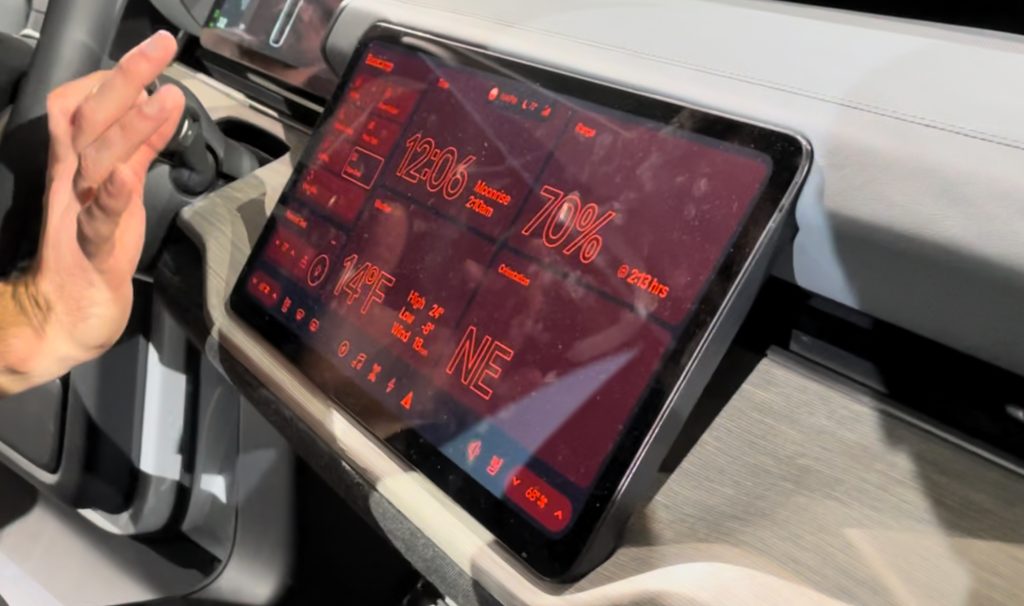
This matters because red light has less of an effect on your night vision than other wavelengths of light does. This is why red lights are used in ships at night, or if you ever go stargazing with serious astronomy-types, they’ll only let you use flashlights with red filters on them.
We can imagine this feature might make it to other Rivians as well via software updates, but this is the first we’ve seen of it – on any car, which really shows that Rivian isn’t just thinking about neat features that work for EVs, but how they fit into the specific “adventure” ethos the company is building.
This is also apparent in Rivian’s removable flashlight, a popular feature in the R1 which returns in the R2. It’s always good to have a flashlight handy while adventuring.
But the new detail here is that there’s not just a flashlight, but on the other side in the same spot, there’s another device of similar size which has a USB-C port and can be used as a portable backup battery for devices (as if you’ll ever run out of juice, given that the car has 8 USB-C ports – 2 front, 4 rear, 2 trunk, with a 120V outlet in the trunk to boot). This also stays charged while it’s slotted in the door, just like the flashlight does, and the units are interchangeable from one side of the car to the other.
But also the phone charger has a button on it which allows it to be used as a hand warmer (which, as a native Southern Californian, is something I hear people need when they live in places that get “cold,” whatever that is). So not only did Rivian surprise us with another cool device, but they surprised us with another cool device with an additional use on top of the initial use which already impressed us.
(Note also: the door pockets have been redesigned, with door speakers moved inboard on the car, so that the pockets are now taller and can fit your tall stainless water bottle – and they’re still expandable if you need to fit something a tad too thick in them)
And then there are all the features you heard about in the livestream, and in previous articles we wrote about the event, like the many planned accessories Rivian is working on (and which they promise won’t turn out like the Camp Kitchen and Tunnel Shuttle did last time).
The one arguable miss (depending on how you look at it) is charge port placement for the NACS charge port – it’s on the rear passenger side, rather than rear driver side like on Teslas. This means that, when charging at V3 Superchargers, Rivians may end up causing conflicts (which is why we really need the new V4 superchargers with longer cables).
Rivian had good reasons for this – compatibility with its Rivian Adventure Network (R1s park nose-in, R2s would back in) and with existing owners’ home charger installations, easier charging for those who park and charge on the street, which is common in Europe where the R2 will be launching, and perhaps most importantly cheaper wire harnesses in the vehicle due to placement of components. But we still wonder if it would have been more worthwhile to go through the troubles to place new NACS-only charge port on the front passenger side for better compatibility with the much larger Supercharger network.
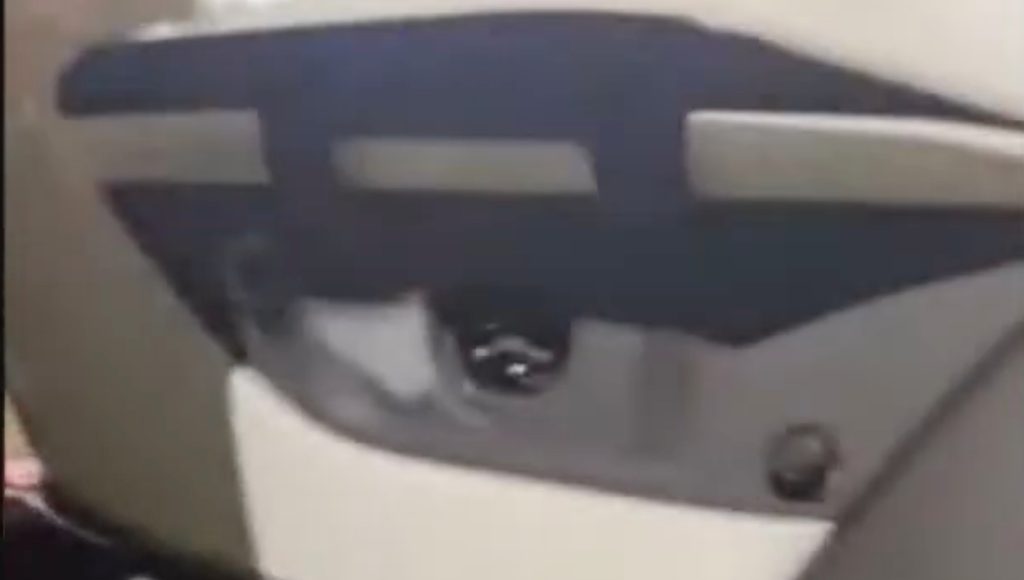
Regardless, the net effect of all of these features, in addition to the ones mentioned in the livestream, is a car that just seems eminently usable. Just as I felt at the first Rivian R1 reveal event, it feels like the engineers and designers at the company really get it – they get the benefits that electric powertrains can bring, they get how people use their cars, they get how to make features that don’t just “surprise and delight” but actually have practical applications.
Most cars only have one or two of these neato features, the kind that you show your friends while saying “hey, look what this car can do!” This car, however, has enough of them to justify an 1,800-word article (sorry).
Top comment by Michael Surace
We recently bought our first full EV, MYLR like every other human. the R2 is the first non-Tesla EV we can afford which is also appealing on tech specs and looks. I was never going to buy a $100K car. I currently drive and love a 2016 Chevy Volt and am looking at an Aptera. 2 days ago I thought my 2026 garage would have a Tesla and an Aptera. Today I can totally see an R2 and R3x sitting side by side sharing our NACS charger.
RJ and team excellent job. Compelling offerings, changing the landscape and my EV vision board in an instant. Gotta solve the port location though, we went with Tesla for the car, yes, but almost as much for the charging network and I don't see you winning that one.
And all of that isn’t even about the car I liked most from the showing. I’m a small-car guy (and you should be too), so the surprise small-SUV-crossover-rally-car-hatchback-or-whatever-you-wanna-call-it R3 was extremely exciting to me. I love the form factor, I love that they got their inspiration from ’80s Group B rally cars (complete with funky interior), and I can’t wait to see more details on this vehicle.
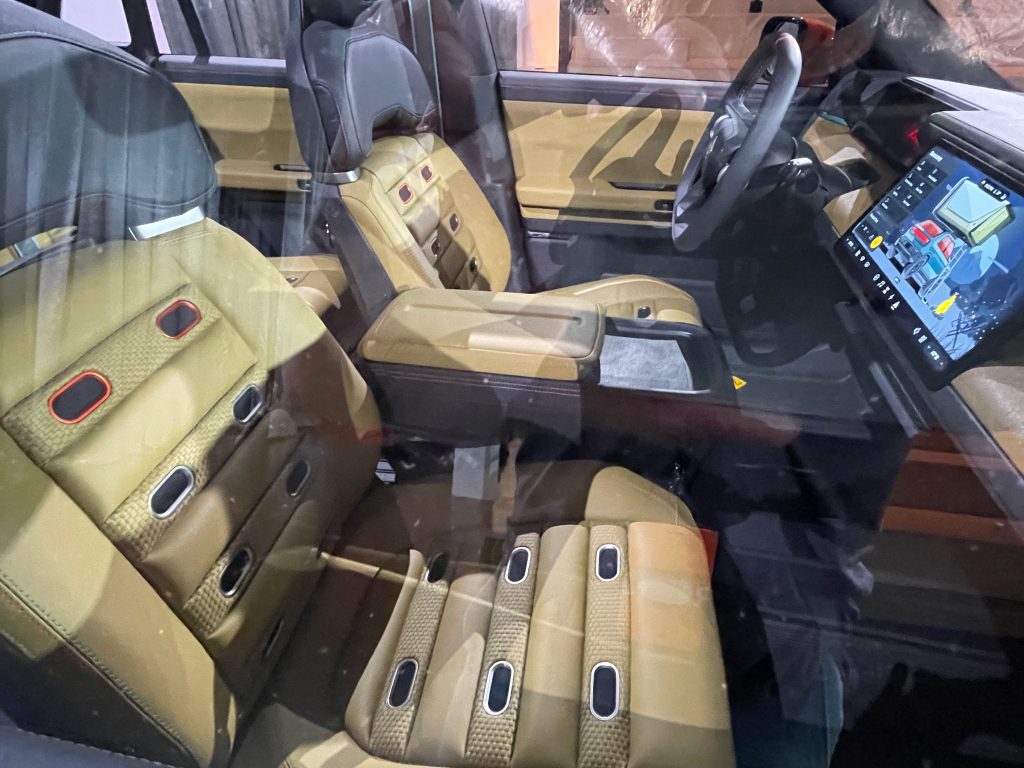
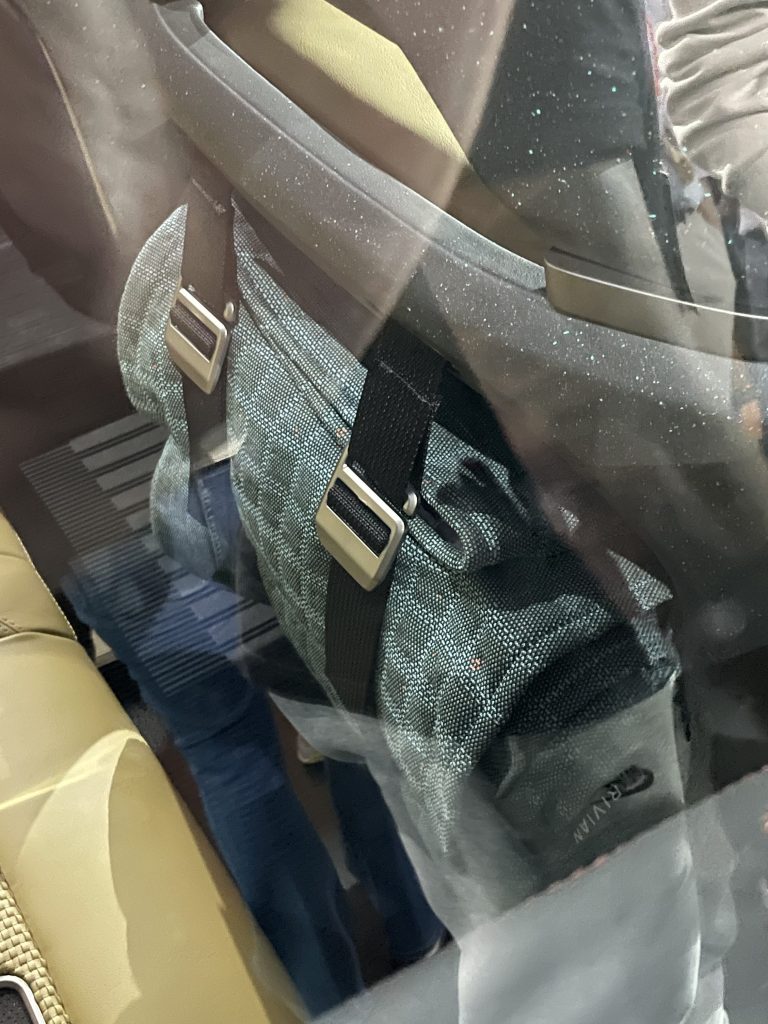
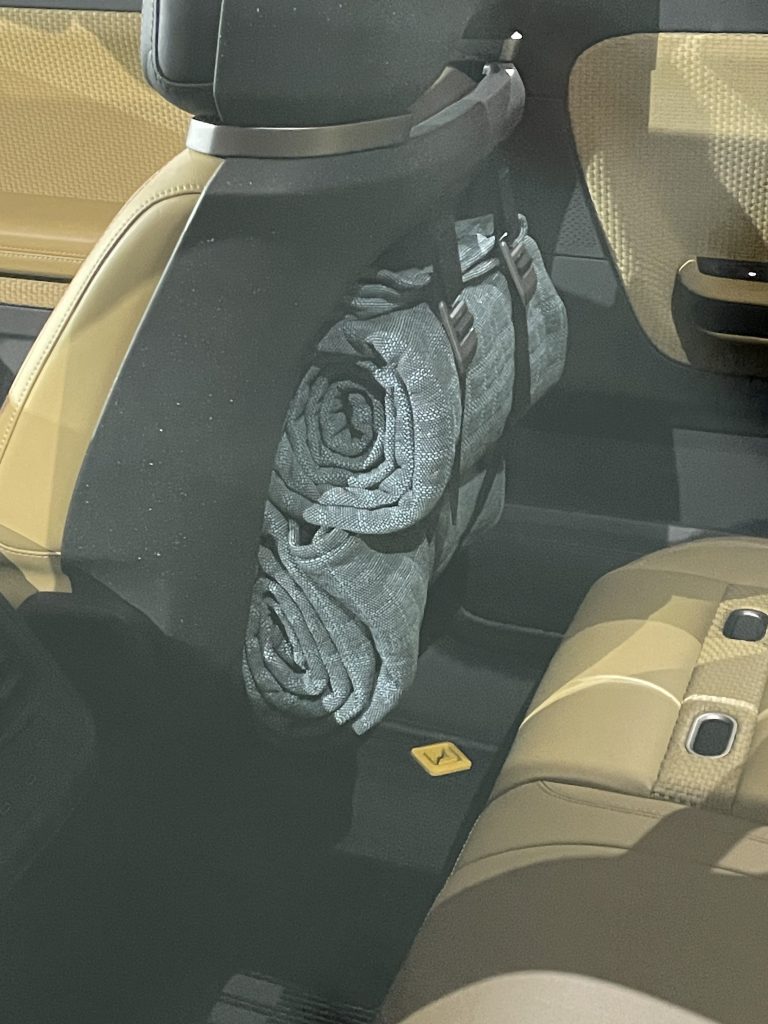
There were hints of a few neat hidden ideas on the R3, like a (removable?) storage compartment on the back of the driver’s seat on the R3X and some kind of cool strap-down blanket thingy on the passenger’s seat, but since the doors weren’t open and that car is quite far from production, those will have to wait for another day.
Which brings up an important point – by the time production comes around, there’s always a chance that some of these features will go by the wayside. I already heard speculation that the fold-out rear quarter windows might not make it to production (CEO RJ Scaringe really likes them, but they’re a little redundant with the slide-down rear window), or that they might have to scale back plans for the haptic touch steering wheel knobs (this seems too crucial to the control of the vehicle to me – I bet it stays in, and eventually gets into the R1 too).
But the combined effect of these features is enough to show that Rivian really is at the vanguard of putting new ideas into design on their vehicles, and like other EV startups before them, they seem to be moving at a pace that traditional automakers are going to have a hard time catching up with.

FTC: We use income earning auto affiliate links. More.

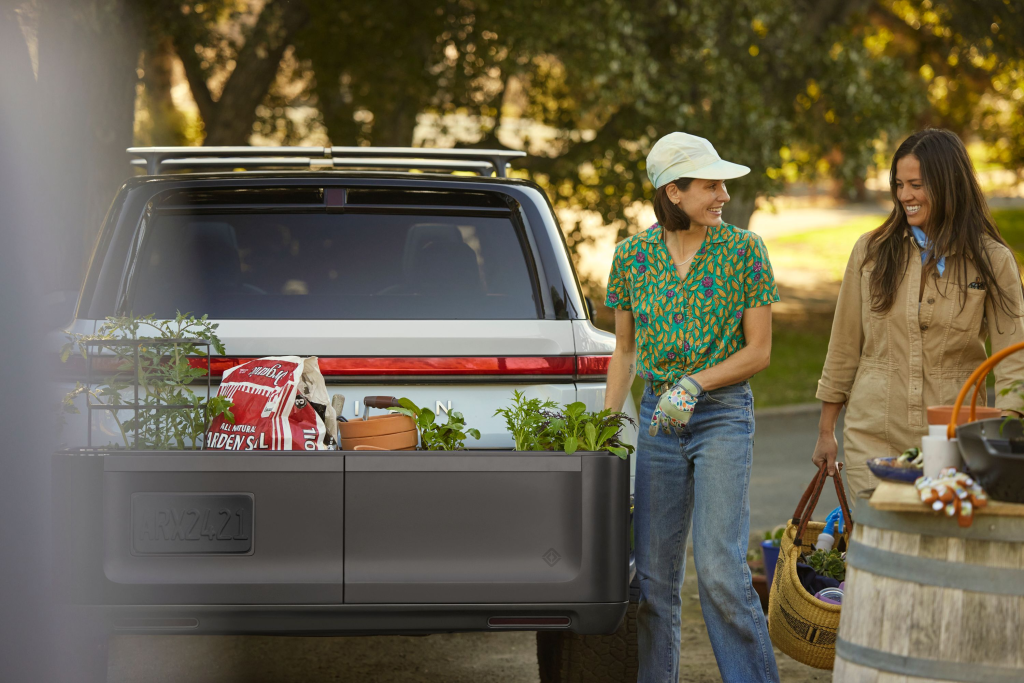
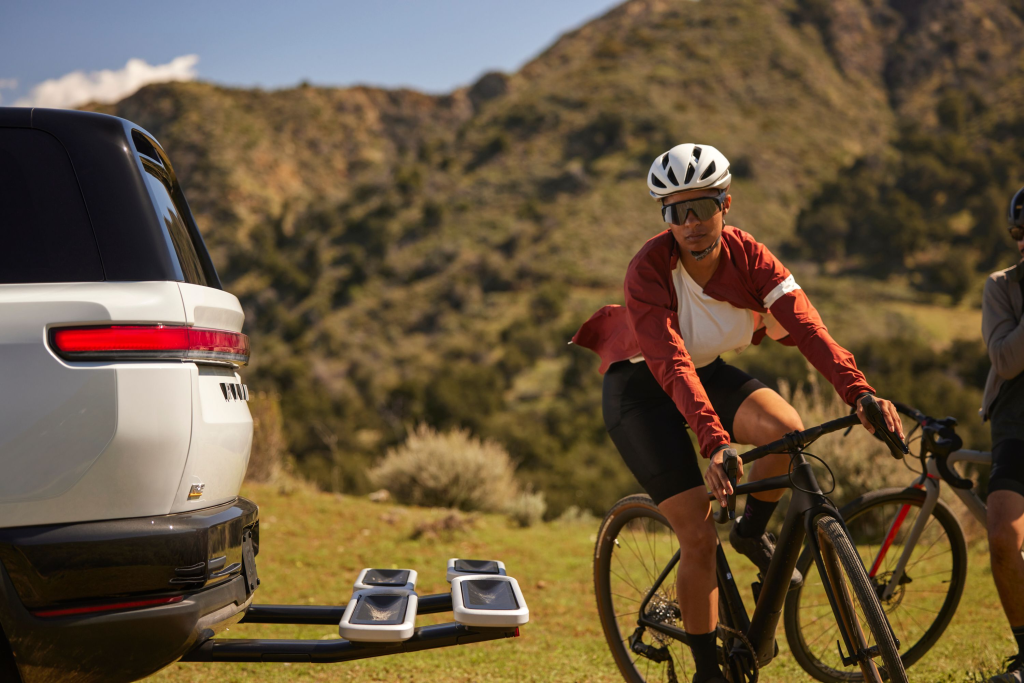


Comments